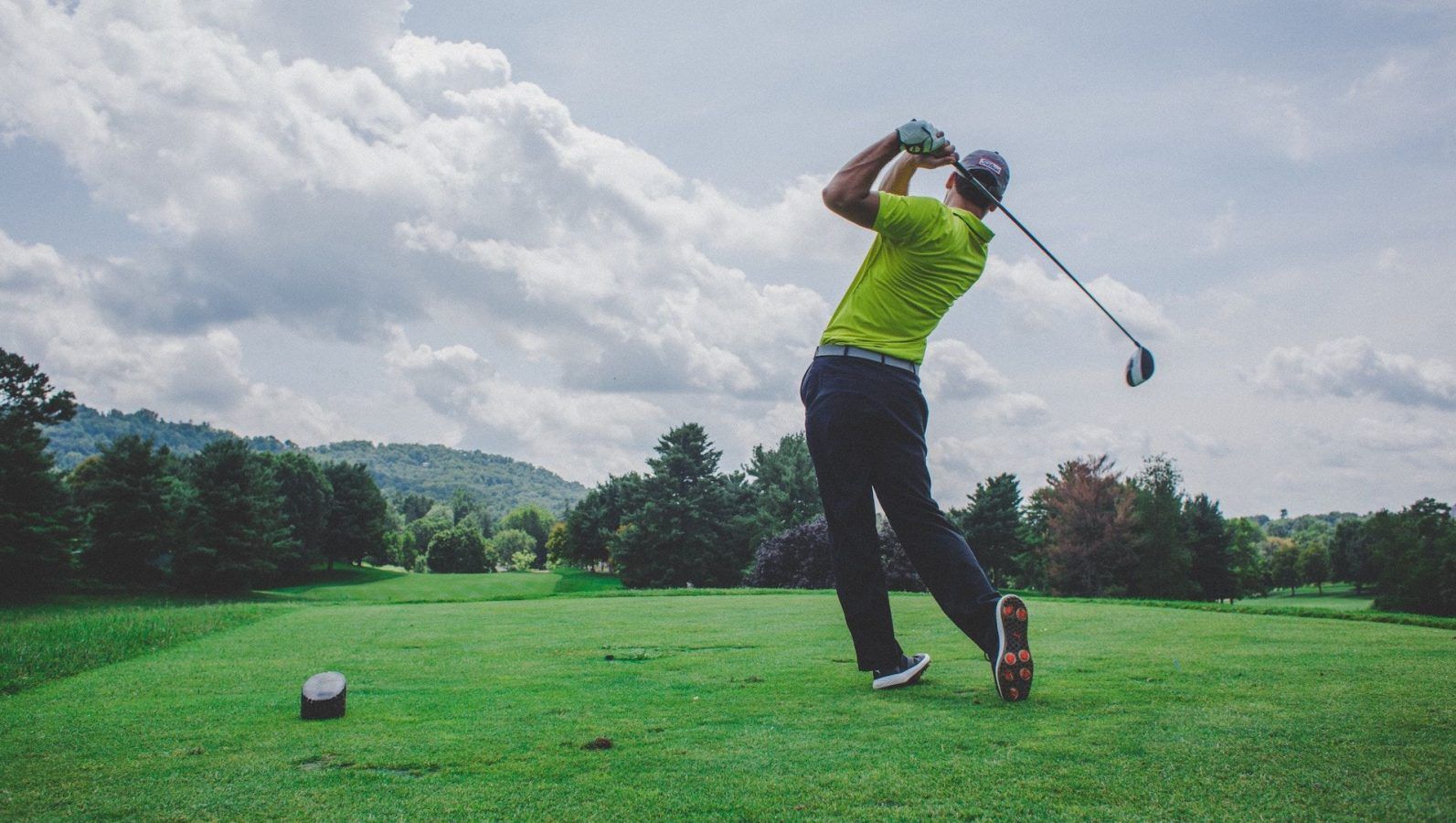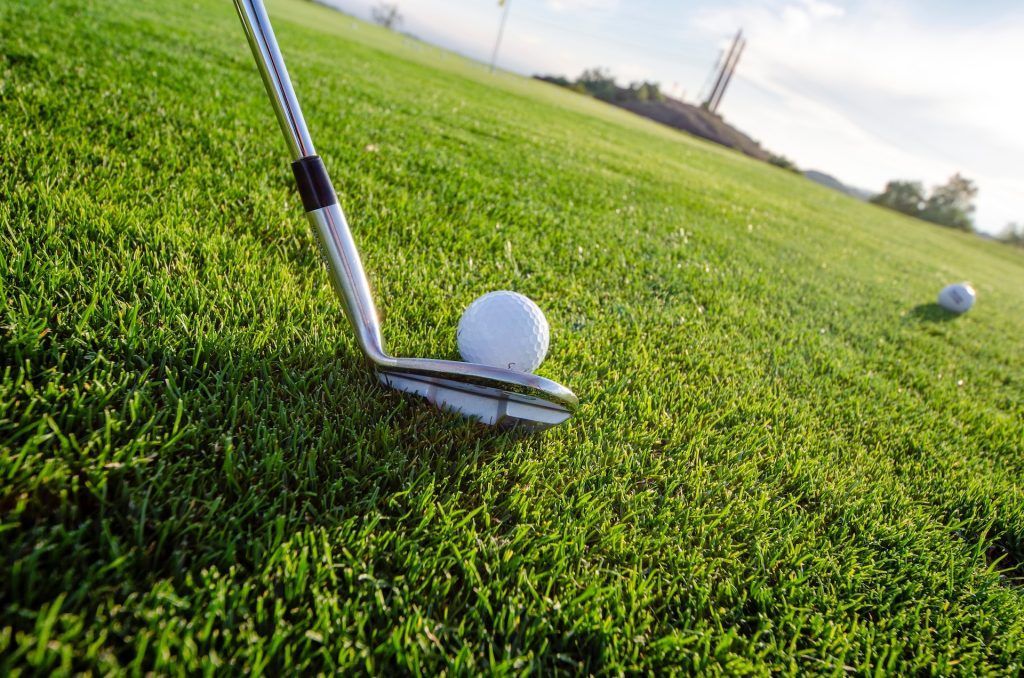The Ultimate Guide to Playing Golf for Beginners


Ask the addicts; the day they took to golf ranks right up there in their list of life achievements. The thrill of the maiden foray into a golf course, crisscrossing the pristine fairways and greens en-route the driving range for that first lesson they experienced as beginners will stay etched in memory for posterity.
But beyond the soaking in of novelties and the sound of a club striking ball for the first time, lies a leap of faith that awaits every first-timer. This is what separates the faithful and fickle minded as patience is the game-changer here.
Learning golf and getting better at it is challenging. Unlike many other sport, there is a lot more happening on the golf course. The intricacies of rules, etiquette, handicapping, and above all, developing an understanding of the clubs to use in different conditions and across terrain takes time to imbibe.
But, don’t worry, for as the journey starts, it is unique for each one of us, the joy of discovering the golfer in oneself can soon be the overriding factor over time; remember as we said, golf is not an easy sport to learn.
Having said so and as the initiated often say, the best things in life don’t come easy, and golf easily qualifies in this bracket.
So, sit back, relax, and take note of our checklist as we attempt to make your initiation into one of the greatest sports an enjoyable one with our definitive guide to golf for beginners.

Despite being a low-impact sport, golf can result in serious injuries if you are not physically ready. Even if you are a beginner, fitness is an absolute prerequisite, as it has a direct impact on how well you play. Besides, maintaining fitness will help prevent several common golf injuries. Every major muscle in the body is used in the golf swing to give the ability to strike the ball powerfully. So it goes without saying that playing golf requires a physically fit and healthy body. Three top things that can get you in golf shape include:
1. Cardio exercises to improve endurance
2. Dynamic stretching to improve flexibility and mobility
3. Strength training to activate key muscles and body parts
Never forget that no matter how good your technique is, it won’t matter if you lack stamina, strength, endurance, flexibility, and coordination.

To get started, it’s crucial to buy yourself some quality golf equipment. This does not imply that you go out and spend on big-ticket golfing gear. There will be plenty of time to go after the newest, hottest golf stuff in the market, but at first, give priority to learning over buying.
It is always a good idea to prioritise honing your golf swing basics over investing in pricey clubs when you are just starting. Additionally, there are many great options in golf clubs for beginners to get started, including purchasing a used set from online retailers or waiting for great discount deals and saving money as you go along. What you’ll need is as follows:
1. Golf clubs including:
• Drivers
• Irons/Wedges
• Hybrids
• Fairway Woods
• Putters
Each club is made for a particular type of shot.
2. Golf balls
3. Golf tees
4. Golf shoes
5. Golf gloves
That should get you going.
Learning the game of golf requires familiarising yourself with its rules and regulations. Don’t be intimidated, even though they may initially seem too daunting. It can be tedious to comb through hundreds of pages of the official rule book of golf to determine which ones are most significant. Simply learn the fundamentals, and the rest will come to you as you go.
Some Basic Rules of Golf for Beginners:
• 18 holes make up a full round of golf.
• While you can practise air swings, you cannot hit the ball before your shot.
• The ball must be played exactly as it lies. You can’t kick it or shift it to a better spot.
• You can pick up the objects that are around your ball, such as sticks, leaves, stones, boulders, pebbles, dead grass, feathers, and pine needles, but you must be careful not to move your ball, as doing so will result in a penalty.
• You need to hit the ball with one fair strike with the head of the club. Scooping is prohibited.
• While a deliberate double hit is penalised, an unintentional one is not.
• You are not allowed to hit moving balls (unless they’re in water hazards).
• The golfer who is farthest away from the hole goes first.
• Prior to hitting the ball, make sure it is yours; otherwise, you will incur a 2-stroke penalty.
The above are just a few basic golf rules for beginners. If you’re interested in learning more, here are a couple of useful resources for knowledge and golf lessons for beginners below:
Now that you have your brand new golf clubs, are well-informed about the game’s rules, and are raring to take a swing, will you be able to put your knowledge into action? Well, the more you think about golf, the more perplexing it all seems to be! As a beginner, you can’t help but read and watch too much about golf, which may be overwhelming at times. You can’t play golf alone and figure it out. Instead, seek out someone who plays golf and ask them to take you to play.
The best way to learn golf is to go out and practise with an experienced player. It is how every one of us learns. Once you find a golfing mentor to assist you, learn to strike the ball and take swings. The most effective course of action is to stick to the basics and focus on one shot at a time. Don’t be afraid to make mistakes. Reframe your mistakes as a chance to grow and learn.
Develop good golf habits early on and learn how to approach the game the right way. Keep in mind that every step counts and every little progress is a victory in golf.

Golf is one of the top sports in the world. Nevertheless, starting as a novice can be a difficult and even unnerving prospect. Below is a list of a few dos and don’ts for beginners to assist you in taking the leap.
• Do: There is no better way for beginners to start out than using a practice range and becoming accustomed to the sport before heading out to the course.
• Don’t: Worry about what others think of you. Remember, every master started as a novice. Every professional golfer started as an amateur.
• Do: Work with someone who plays the sport. You may create a far more solid basis for your game with the help of experienced players and/or golf instructors.
• Don’t: Let a random person from the course teach you the ropes. You won’t get far with it. Choose the right one to learn.
• Do: Spend time learning the guidelines and golf etiquette.
• Don’t: Pick up any other player’s ball even if you can’t see anyone on the course. You may sabotage someone else’s round.
• Do: Focus on your successful shots and ignore your unsuccessful ones.
• Don’t: Give up when nothing seems to be working. Don’t focus too much on your playing flaws. Just take it all in stride.
Golf has long been considered a gentleman’s game. There are a lot of unwritten regulations that are willingly embraced by golfers all the time. Those regulations are more about good golf etiquette than rigid limitations. Always practice good golf etiquette, as it demonstrates your respect for the sport and the other golfers you play with. Let’s look at some of the most common golf etiquette that you can put to use; no matter if you are a beginner or a pro.
1. Always arrive at least 15 minutes before your tee time. Don’t hold up the game for your fellow players.
2. Do not block the other player’s line of vision; let him or her focus entirely on the swing.
3. Avoid wasting too much time searching for a lost golf ball. It’s possible that the golfers behind you don’t like being held up.
4. Stay silent when someone is taking a swing.
5. Never toss your golf clubs away. In addition to being impolite, you run the risk of hurting others.
(Main image: Courtney Cook/ Unsplash; Featured image: Adrian Hernandez/ Unsplash)
A beginner should have the following golfing equipment when starting out: Golf set (usually come with drivers, irons/wedges, hybrids, fairway woods, putters, and stand bags), golf balls, tees, shoes, and gloves.
If you are a beginner, it is preferable to learn the game on a practice range rather than a golf course.